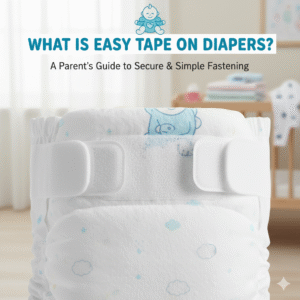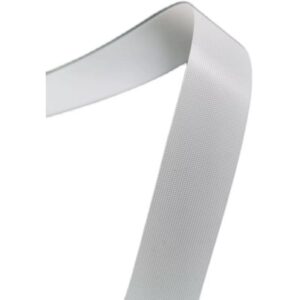Discovering Wound Care Solutions for Gentle Healing with Favourite Fab
In the complex world of wound care, selecting the right dressing is paramount for promoting optimal healing, minimizing patient discomfort, and preventing complications. A key innovation in this field is the non adherent dressing, designed specifically to protect the wound bed without sticking to delicate new tissue. This ensures pain-free removal and prevents trauma that can delay the healing process.
At Favourite Fab, we are committed to providing high-quality medical dressing solutions. Because we understand the crucial role of gentle wound management, we offer a comprehensive range of non adherent dressings. Therefore, we aim to equip healthcare professionals and individuals with the knowledge to choose the ideal dressing for every situation. This guide will delve into non adherent dressing examples that are revolutionizing modern wound care.

Get Free Sample Kit Of Our Fabric At Your Door Step
- Online Order
- Door Delivery
- 1-Click Quotation
What is a Non-Adherent Dressing? Unpacking the Definition
What is a non adhering dressing?
A non adhering dressing (also frequently called a non adherent dressing or non stick dressing) is a type of wound contact layer that is specifically engineered to prevent adherence to the wound bed. This means the dressing will not stick to the new tissue, blood clots, or exudate as it dries. The primary goal is to facilitate atraumatic dressing changes, minimizing pain and preventing disruption of the fragile healing process.
What is an example of a non stick dressing?
A common and classic example of a non stick dressing is a Telfa dressing. These pads typically feature a highly absorbent cotton core encased in a non-adherent, perforated film that prevents the dressing from sticking to the wound.
What are non-adhesive dressings?
It’s important to clarify the distinction: A non adhesive dressing is a broader term meaning the dressing itself does not have an adhesive border or backing. It requires a secondary dressing (like tape or a bandage) to hold it in place. Many non adherent dressings are also non-adhesive, but not all non-adhesive dressings are necessarily non-adherent at the wound interface unless specified. The key difference between adherent and non adherent dressings lies in whether they stick to the wound bed (adherent) or not (non-adherent).
When to Use a Non-Adherent Dressing: Key Scenarios
When should you use a non-adherent dressing?
You should use a non-adherent dressing whenever preserving the integrity of the wound bed and ensuring pain-free removal are primary concerns. This includes:
- For Burns: Non adherent dressing for burns is crucial. Burn wounds are extremely painful and delicate, and a non-adherent layer prevents the dressing from fusing with the tissue, making changes less traumatic.
- For Skin Grafts and Donor Sites: Non adherent dressing for skin grafts and non adherent dressing for donor sites are vital to protect newly grafted skin or the fragile donor area without pulling away new cells.
- For Open Wounds: For any open wounds with exposed, delicate tissue, a non stick dressing for open wound prevents the dressing from becoming embedded in the wound bed.
- For Sensitive Skin: Patients with sensitive skin, pediatric patients, or the elderly with fragile skin benefit greatly from the gentle removal.
- For Surgical Wounds (Post-Op): Non adherent dressing for surgical wounds (or post-op wounds) ensures sutures or staples are not snagged and the incision line remains undisturbed.
- For Tattoos: A non adherent dressing for tattoos can protect the fresh tattoo without sticking to the healing skin or scabs.
- For Weeping Wounds: A non-adherent dressing for weeping wounds with a good absorbent secondary layer can manage exudate while ensuring the dressing doesn’t stick as fluid dries.
- For Skin Tears: These delicate injuries require a dressing that won’t cause further trauma upon removal.
The 7 Best Non-Adherent Dressing Examples
Here are some of the most effective and widely used non adherent dressing examples, each with unique properties making them suitable for different wound types:
- Telfa Dressing (Telfa Pads):
- Uses: A versatile non stick wound dressing for light to moderately exuding wounds, surgical incisions, minor burns, and abrasions. They are widely considered the best non stick gauze pad for general use due to their soft, perforated film that prevents adherence.
- Benefits: Excellent for pain-free removal, cushions the wound, and allows for fluid passage to a secondary dressing.
- Mepitel Dressing (Silicone Mesh Dressing):
- Uses: An advanced non adherent dressing with a soft silicone mesh. Ideal for a wide range of wounds, including burns, skin grafts, skin tears, and wounds with fragile surrounding skin. Can remain in place for several days.
- Benefits: Extremely gentle on the wound and surrounding skin, minimizes trauma, allows exudate to pass through to a secondary dressing, and can be easily repositioned.
- Adaptic Gauze Dressing (Petrolatum Emulsion Dressing):
- Uses: A non-adherent knitted cellulose acetate mesh impregnated with a petrolatum emulsion. Excellent for burns, skin grafts, donor sites, and wounds where a moist environment and minimal adherence are crucial.
- Benefits: Keeps the wound moist, prevents adherence, and promotes epithelialization. The mesh structure allows exudate to pass through to a secondary dressing.
- Xeroform Dressing (Bismuth Tribromophenate Petrolatum Dressing):
- Uses: A fine mesh gauze impregnated with petrolatum and 3% Bismuth Tribromophenate (a deodorizing/antiseptic agent). Often used for ulcers, donor sites, burns, and wounds with a risk of infection or odor.
- Benefits: Non-adherent, promotes a moist healing environment, helps reduce odor, and offers bacteriostatic properties.
- Jelonet Dressing (Paraffin Gauze Dressing):
- Uses: A paraffin-impregnated open-weave gauze dressing. Commonly used for burns, skin grafts, ulcers, and skin tears.
- Benefits: Creates a moist environment at the wound surface, preventing adherence and protecting newly formed tissue. Requires a secondary absorbent dressing.
- Kendall Non-Adherent Pads (or similar Non-Woven Pads):
- Uses: These are typically multi-layered non stick wound pads made from non-woven materials, often with a coated contact layer to prevent adherence. Used for general wound care, minor cuts, abrasions, and as a primary dressing post-op.
- Benefits: Absorbent, low-lint, conformable, and designed for gentle removal.
- Hydrogel Dressings (Sheet or Amorphous):
- Uses: While some hydrogels are adhesive, many come as non adhesive dressing sheets or amorphous gels that require a secondary dressing. Ideal for dry wounds, necrotic wounds (aiding debridement), and minor burns.
- Benefits: Provide moisture to the wound, aid in autolytic debridement, cool painful wounds, and are non-adherent.
How to Apply a Non Adherent Dressing
How to apply a non adherent dressing?
Applying a non adherent dressing correctly is essential for its effectiveness:
- Hand Hygiene & Clean Field: Always start by washing your hands thoroughly. If dealing with an open or surgical wound, prepare a sterile field and don sterile gloves.
- Wound Preparation: Gently clean the wound with an appropriate wound cleanser or saline solution. Pat the surrounding skin dry completely.
- Choose the Right Size: Select a non adherent dressing that completely covers the wound bed and extends slightly onto the surrounding healthy skin. If using a Large Non Adhesive Wound Dressing, ensure it can be properly secured.
- Place the Dressing: Carefully place the non adherent Pad directly onto the wound surface, ensuring the non-adherent side is facing down. Avoid touching the wound contact layer with your fingers.
- Secure with a Secondary Dressing: Since it’s a non adhesive dressing, it needs external securement. Use medical tape, a cohesive bandage, a non adhesive bandage, or an adhesive film to hold it in place. Ensure the secondary dressing is applied firmly but without excessive tension.
Important Considerations
- Is gauze a non-adherent dressing? Plain woven gauze is not a non-adherent dressing. It can stick to wounds, causing trauma upon removal. However, specialized non adherent gauze dressings (like Adaptic or Xeroform, or non adherent gauze dressing made from non-woven material with a non-stick coating) are designed to be non-adherent.
- Can you put a non-adherent dressing directly on a wound? Yes, non adherent dressings are specifically designed to be placed directly on the wound bed. This is their primary function – to protect the wound surface while preventing adherence. They form the wound contact layer.
- Non-adherent dressing for weeping wounds: For wounds with significant exudate, a non-adherent dressing still serves as the primary contact layer. However, it must be combined with a highly absorbent non adherent dressing as a secondary dressing (e.g., a thick foam or highly absorbent pad) to manage the fluid and prevent maceration of the surrounding skin.
Favourite Fab: Your Trusted Source for Non-Adherent Dressings
At Favourite Fab, we are pioneers in providing advanced wound care solutions. Our expertise as a leading manufacturer ensures that our non adherent dressing examples meet the highest standards of quality, effectiveness, and patient comfort. We understand the nuances of wound management and are dedicated to supporting healthcare professionals and caregivers with superior products.
Whether you are looking for Telfa pads, silicone non-adherent dressings, or require bulk non adherent dressings for a hospital or private label wound dressings for your brand, Favourite Fab is your reliable partner. We offer wound dressing wholesale and can provide tailored solutions for your specific needs. Our commitment to E-E-A-T means you receive products from a trustworthy source, backed by extensive experience and authority in the medical textile industry.
Frequently Asked Questions (FAQ)
What is an example of a non stick dressing?
A common example of a non stick dressing is a Telfa dressing. These pads are specifically designed with a perforated non-adherent film layer that prevents them from sticking to the wound bed while still allowing exudate to pass through to an absorbent layer.
What are non-adhesive dressings?
Non-adhesive dressings are wound dressings that do not have their own sticky (adhesive) border or backing. They need to be secured in place over the wound using a separate method, such as medical tape, a cohesive bandage, or an adhesive film dressing.
Which is considered a non-adherent dressing?
Many types are considered non-adherent dressings, including Telfa dressing, Mepitel dressing, Adaptic gauze dressing, Xeroform dressing, Jelonet dressing, and certain silicone non adherent dressing products. They all share the key characteristic of preventing adherence to the wound bed.
What is a non adhering dressing?
A non adhering dressing is a wound dressing whose primary contact layer with the wound surface is specially treated or designed to prevent it from sticking to the delicate new tissue, blood clots, or dried exudate. This ensures pain-free removal and minimizes trauma to the healing wound.

Get Free Sample Kit Of Our Fabric At Your Door Step
- Online Order
- Door Delivery
- 1-Click Quotation
Contact Us
Elevate your wound care standards with Favourite Fab’s premium non adherent dressing examples. For inquiries, bulk orders, or custom manufacturing, reach out to us today.
Email: sale@favouritehub.com WhatsApp: 9528811566
Partner with Favourite Fab for innovative, reliable, and high-quality wound management solutions.






































We Do Business On Trust.Our Nonwoven fabric Business is Built on trust. Trust starts with Transparency.
Mr.Ramniwas Garg Founder Of Favourite Group